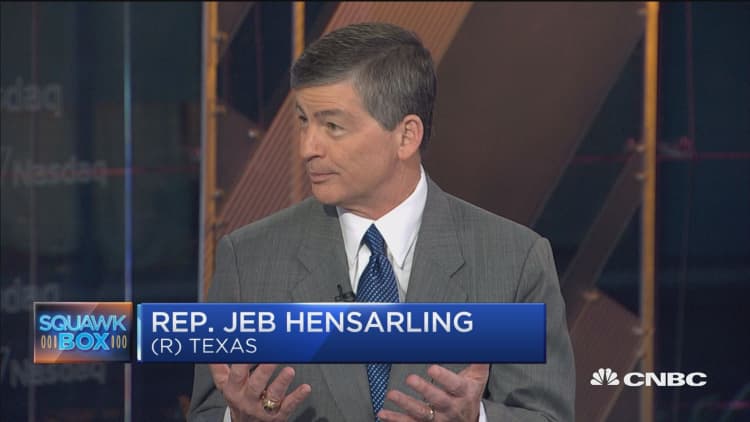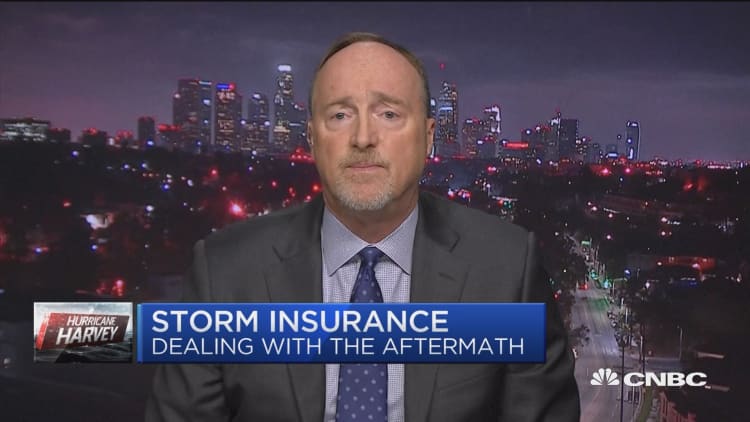Now might be a good time to go over your insurance policies, to make sure you're covered for flooding and other potential spring water damage.
In a 2017 report, Farmers Insurance identified water damage — from floods, backed-up sewers and other sources — as one of the three notable homeowners insurance "seasonal hazards" for spring, with 17 percent of annual claims nationwide occurring between March and May. In some regions, it's even more prevalent: 41 percent of water claims in the Southwest occur in the spring, and 27 percent of those in the Mid-Atlantic.
A separate Farmers report on spring auto insurance claims found that 41 percent of annual claims related to flash floods and rising water occur in those months.
Both analyses were based on claims data from the preceding four years.
Just this week, storm systems triggered widespread flooding in the Midwest and Southern U.S. The Weather Channel and Accuweather report that there's a continuing threat of flooding in the region with the approach of a new storm system.
The key takeaway for consumers is: Your policies may be less watertight than you think.
"If the thought enters your mind now that you may need to coverage, pay attention," said Lynne McChristian, a spokeswoman for the Insurance Information Institute.
It doesn't take much water to do substantial damage. By FEMA estimates, even an inch of water inside a home can generate $26,807 in structure and possession losses for an "average" one-story property of 2,500 square feet.
You cannot wait until the creeks rise to get this coverage.Lynne McChristianInsurance Information Institute
Proper coverage is one of the best ways to make sure you're adequately reimbursed. Under the new tax law, taxpayers can only claim casualty losses for federally declared disasters.
Aid from FEMA and other sources typically isn't enough to make you whole, either, McChristian said. FEMA data provided to The Advocate in 2016 estimated the average grant payout provided to homeowners after Superstorm Sandy was $8,016; for Hurricane Katrina, $7,114.
Common policy leaks
Flood coverage represents one of the biggest gaps for homeowners and renters.
"Many people still do not understand to this day that the standard homeowners coverage does not include flood [damage]," said McChristian.
In fact, standard homeowners and renters insurance policies typically specifically exclude flooding.
You'll need to purchase coverage from the government's National Flood Insurance Program or on the private market. Only 12 percent of homeowners have a flood insurance policy, according to a 2016 poll from the insurance institute.
There's also a 30-day waiting period before a new policy kicks in — meaning a homeowner buying now wouldn't be covered until right around the time those proverbial April showers arrive.
"You cannot wait until the creeks rise to get this coverage," she said.

Flooding isn't the only potential water hazard gap.
Coverage for water damage from sewer backups — which rain storms can trigger — may or may not be covered under your main policy. If it's not, you can tack it on through an endorsement or rider, said Angi Orbann, vice president for personal insurance property at Travelers.
Keep in mind that you may benefit from coverage even if your home isn't in a flood plain.
People outside high-risk flood areas file more than 20 percent of claims, according to the National Flood Insurance Program. You may also have some risk to possessions kept outside your home, she said — say, in the basement of your apartment building or an off-site storage unit.
"As you can see from the losses that are happening and the weather that is happening in the Midwest, even areas that typically don't flood, are flooding," Orbann said.

Auto insurance coverage for water damage is simpler, but even there, you may not have the right coverage.
Comprehensive coverage encompasses "everything that isn't a collision," said McChristian— including water damage stemming from natural disasters like a flood. About 8 in 10 drivers have such coverage, she said.
More from Personal Finance:
4 ways to cut your taxes under the new law
How to avoid a $100,000 tax penalty if you're holding cash overseas
Don't overlook the risk that comes with employee stock options


